Affiliate links on Android Authority may earn us a commission. Learn more.
Google Pixel 3 and Pixel 3 XL hands on (Updated with video!)
Published onOctober 9, 2018
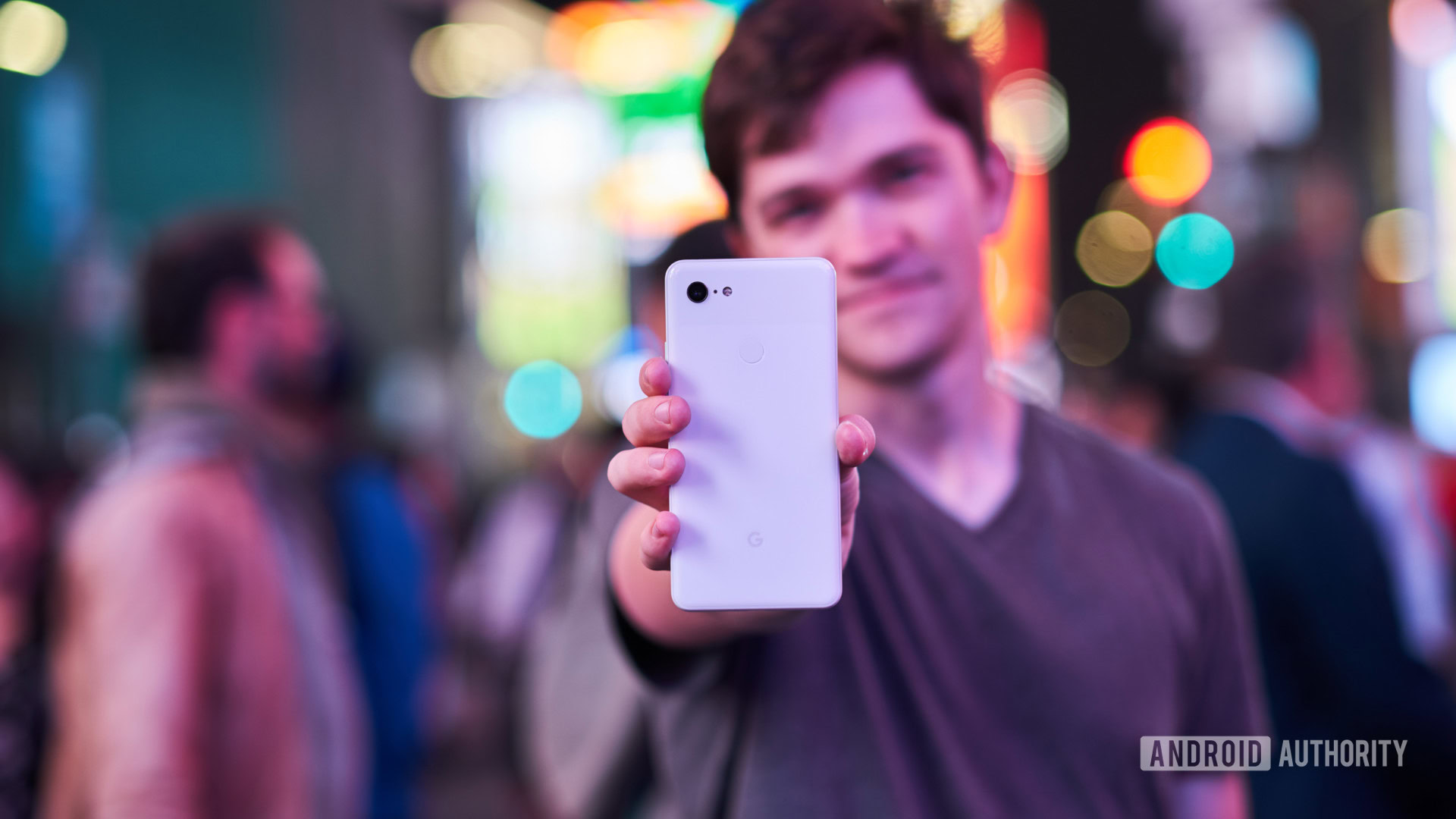
After days weeks months of rumors, leaks, and a whole lot of hype, the Pixel 3 and the Pixel 3 XL are finally here. It’s hard to believe we’re already at the third anniversary of Google’s emergence as a true hardware company. Time flies, as they say.
Don’t miss: Google Pixel 3 and Pixel 3 XL specs
We just got our hands on the Pixel 3 and Pixel 3 XL and our coverage is still ongoing, so make sure to check back as we update our posts. However, let’s go hands-on with the Pixel 3 and Pixel 3 XL.
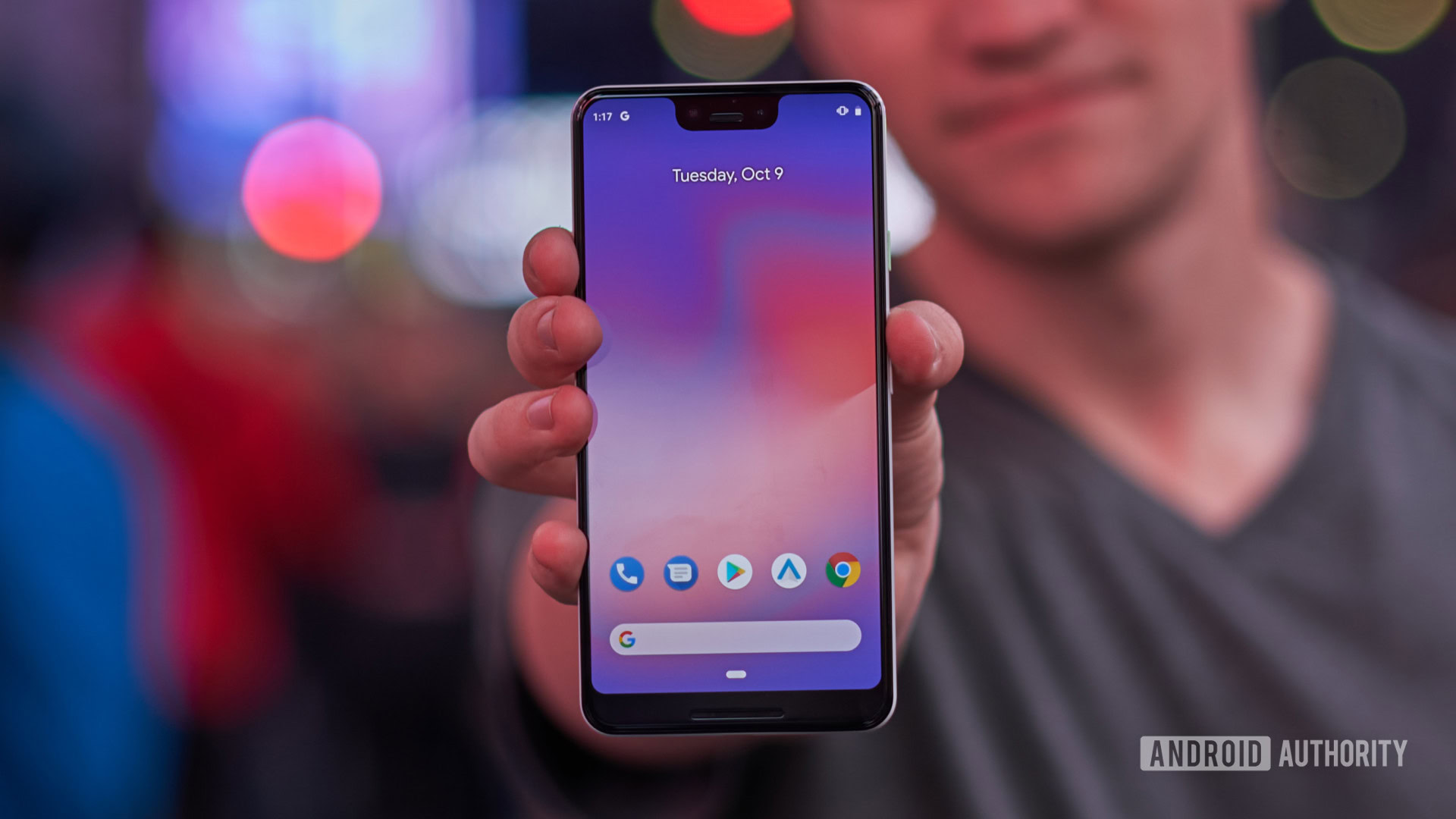
Pixel 3 and 3 XL: Design and build quality
The design of the Google Pixel 3 has caused the most controversy among our readers. The Pixel 3 looks incredibly similar to the Pixel 2 XL, just in a smaller form factor and with slightly more rounded edges. The Pixel 3 XL sports a notch and chin bigger than almost any device we’ve seen.
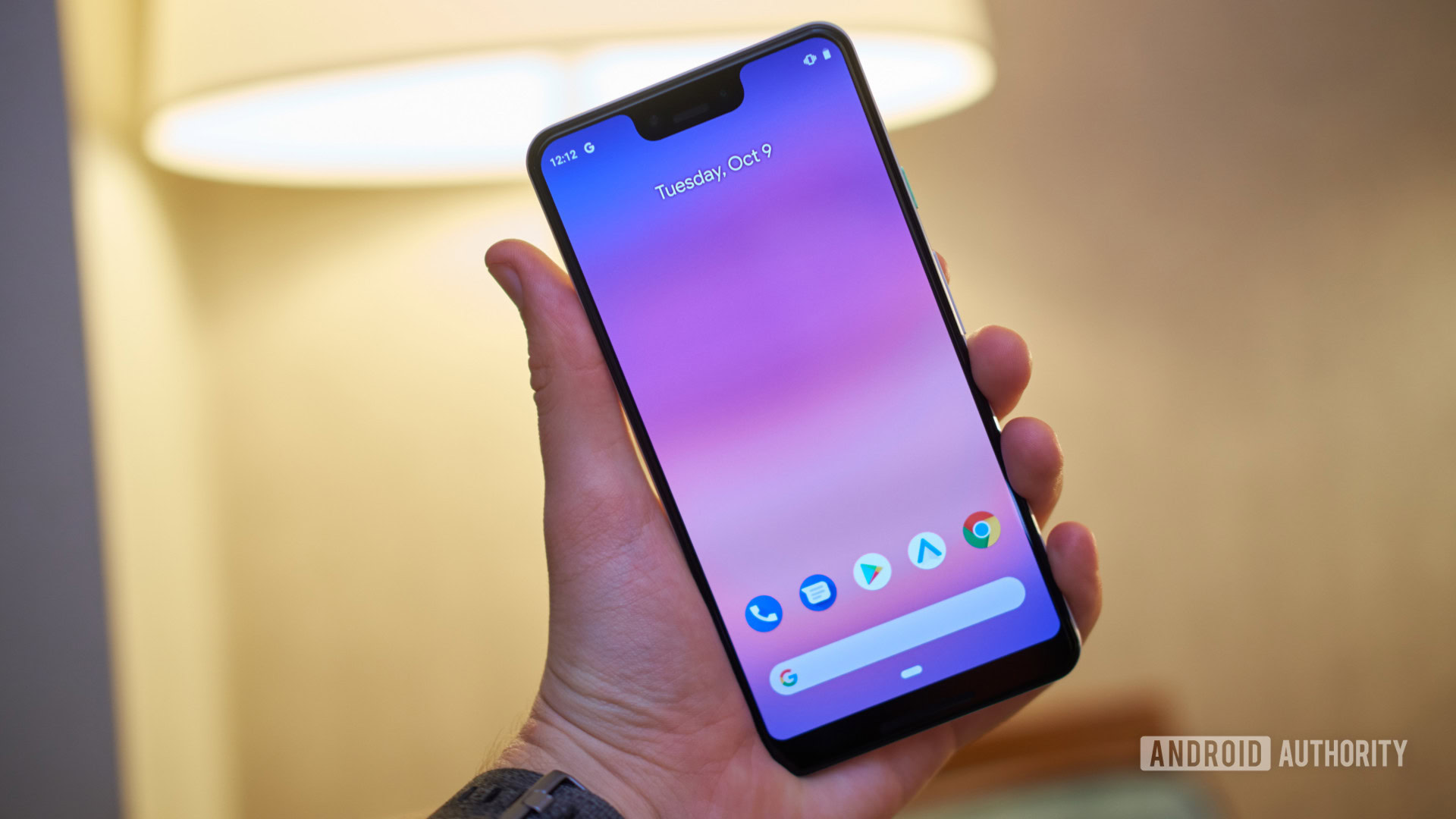
The notch of the Pixel 3 XL houses two large 8MP camera sensors, used for its new Group Selfie mode. With Group Selfie, you can zoom out switch to the wide angle camera (97 degrees), so all your friends fit into the frame.
The design of the Google Pixel 3 is the one aspect of the phone that caused the most controversy.
A notch at the top usually means a fairly minimal bottom bezel, but Google retained one just as thick as the Pixel 2 XL’s. The notch and chin retain the front-facing speakers from last year, which is as good a reason as any to keep a thick bezel. Judging from the many leaks, readers still seem to be a bit disappointed Google didn’t put more effort into slimming it down.
Speaking of the speakers, they are louder and richer than last year — 40 percent louder, apparently. Google even had an award-winning production company tweak the sound for the best experience.
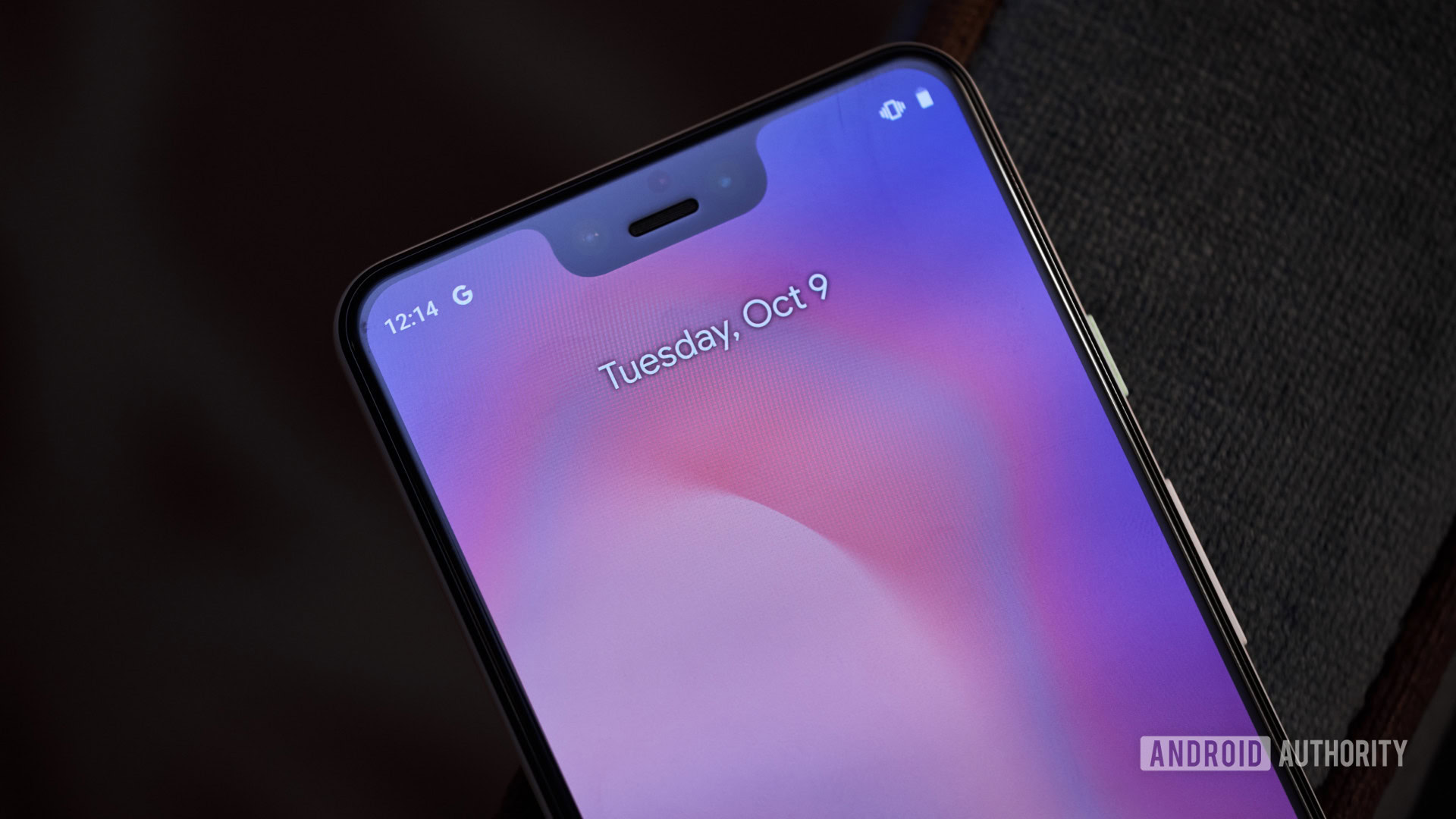
The OLED screen has a 1,080 x 2,160-resolution on the standard model Pixel 3, and 1,440 x 2,960 resolution Pixel 3 XL, measuring 5.5 inches and 6.3 inches, respectively. While last year’s Pixel 2 XL suffered from a “blue shift” issue on its LG-made OLED screen, the screen on the new P-OLED Pixel 3 XL seems to be massively improved. There is no blue shift to be seen, and the display density is 523ppi. From our brief time with the device, the haptic engine has also been improved significantly.
The backs of the devices look extremely similar to the Pixel 2 and 2 XL, save for the rounded edges where the metal meets the glass panel. This new, more rounded design fits well with Google’s Material Design refresh, which utilizes rounded bubbly elements.
The Pixel 3 and Pixel 3 XL feature Gorilla Glass 5 on their front and back. The back features the trademark glass “window” of previous Pixel phones, but this time the effect is achieved by covering most of the glass back with a soft finish. This gives the phones a nice grip. The soft touch also means you won’t see fingerprints nearly as often as last year, which is nice considering these pixels have really nice colors.
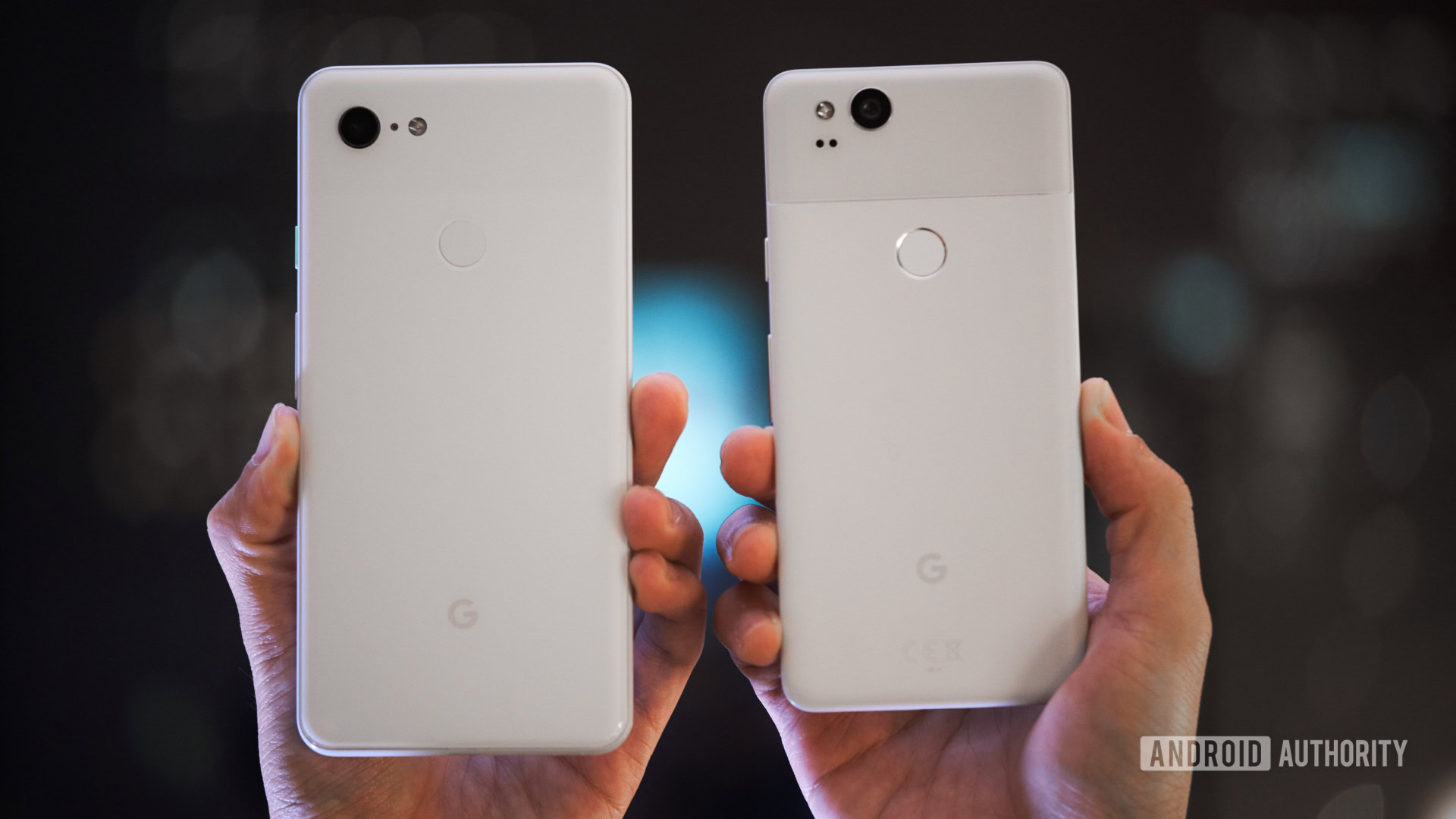
Google has retained the single rear camera design from the previous Pixels, which is honestly fine considering the Pixel 2’s portrait mode is still considered one of the best. You can shift the aperture of the image after you take it just like on the iPhone Xs, and also make the background black and white while giving your subject a splash of color.
To me, it’s clear Google is now working to make cameras with AI-enabled computers strapped to the back. It emphasized the camera that much this year.
While last year’s Pixels came in just black, clearly white, and kinda blue, the Pixel 3 and 3 XL are set to retain the black and white options while also adding a new not pink color (it’s totally pink) with an orange accent on the power button. The white model will have a teal-colored power button.
I’m a huge fan of all the colors this year. I think the not pink was a particularly nice touch — I’m tempted to pick one up.
Pixel 3 and 3 XL: Hardware
Google’s Pixel 3 and Pixel 3 XL sport a Qualcomm Snapdragon 845, 4GB of RAM, and 64 or 128GB of storage with no microSD card expansion. These specs seem fairly minimal, considering other flagships have up to 512GB of storage and 8GB of RAM (or even 10GB), but Google seems confident in its optimization of Android for these devices. This year’s devices sport IP68 water resistance as well.
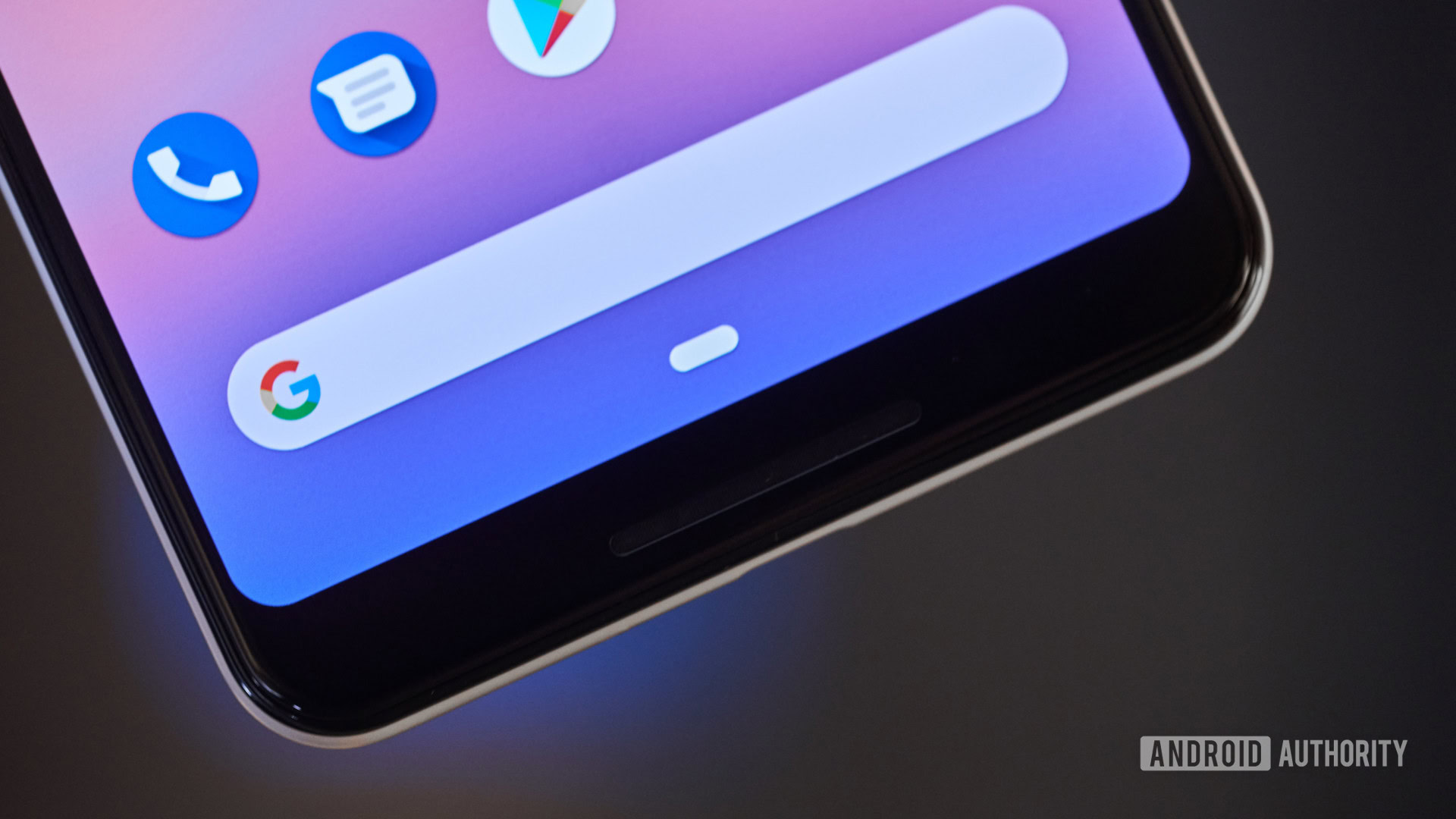
Last year’s phones didn’t include wireless charging, but the Google Pixel 3 changes that. Google is also launching a new Pixel Stand wireless charger, coming in a variety of colors and a soft rubber finish that looks extremely familiar to the Google Home Mini.
Read: Qualcomm Snapdragon SoC guide: All of Qualcomm’s current SoCs and how they compare
The $79 Pixel Stand is not just a charger. It expands the Pixel 3’s functionality, giving you some of the same features as the new Google Home Hub. These include the ability to display curated images from your Google Photos library as a screensaver, control your smart home devices, act as an alarm clock, and display album art when playing music. If you have other Qi-enabled devices, you can charge those as well, though you obviously won’t get the smart stand experience.
The standard Pixel 3 includes a 2,915mAh battery, while the larger Pixel 3 XL sports a 3,430mAh cell. Neither of these capacities is the highest we’ve seen in a smartphone and we just saw the LG V40 struggle with its 3,300mAh battery on a 6.4-inch display. Again, software optimization can always help smaller batteries perform quite a bit better.
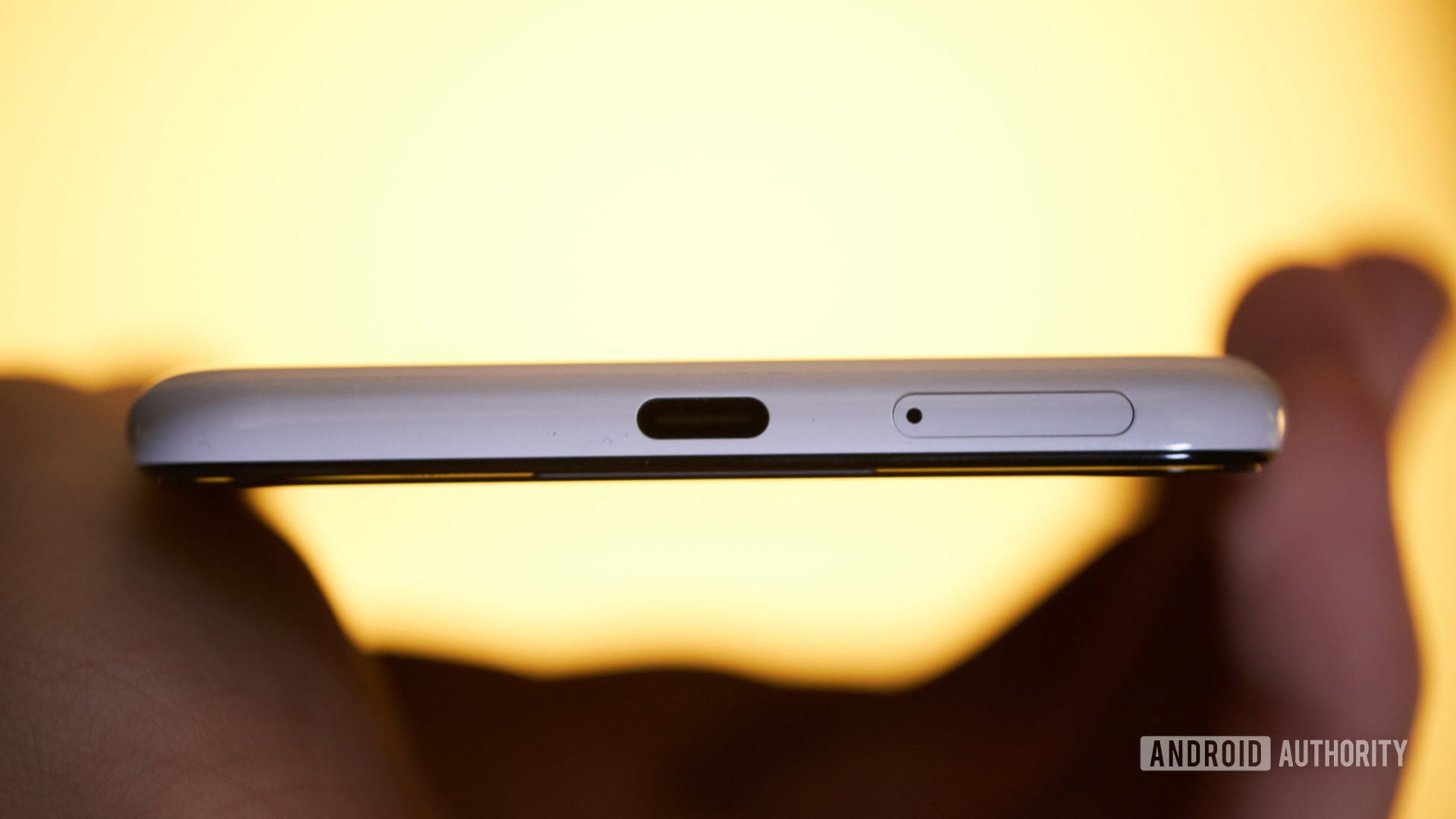
Just like the Pixel 2, the Pixel 3 features an eSIM in addition to the traditional SIM card tray. This will let users of Project Fi use the network without needing a physical SIM card, so they can get their phone up and running straight away.
The Pixel 3 will also come with a pair of USB Type-C earbuds in the box. These earbuds maintain a similar look to the original Pixel Buds, utilizing a fabric jacket and retractable loop design to fit snugly in your ears. Just like the wireless version, they are Google Assistant-enabled.
The new Pixels also retain the Active Edge squeeze feature to launch Google Assistant and Pixel Imprint fingerprint reader from last year.
| Google Pixel 3 specs | Google Pixel 3 XL specs | |
|---|---|---|
Display | Google Pixel 3 specs 5.5-inch flexible OLED 1,080 x 2,160 resolution 443ppi 18:9 screen ratio Gorilla Glass 5 | Google Pixel 3 XL specs 6.3-inch flexible OLED 1,440 x 2,960 resolution 523ppi 18.5:9 screen ratio Gorilla Glass 5 |
Processor | Google Pixel 3 specs Qualcomm Snapdragon 845 | Google Pixel 3 XL specs Qualcomm Snapdragon 845 |
GPU | Google Pixel 3 specs Adreno 630 | Google Pixel 3 XL specs Adreno 630 |
RAM | Google Pixel 3 specs 4GB | Google Pixel 3 XL specs 4GB |
Storage | Google Pixel 3 specs 64GB, 128GB No microSD slot | Google Pixel 3 XL specs 64GB, 128GB No microSD slot |
Cameras | Google Pixel 3 specs Rear: 12.2MP f/1.8 sensor, 1.4 micron pixels, OIS and EIS, spectral and flicker sensor Front: Main: 8MP standard angle (75 degree FOV) f/1.8 auto-focus sensor Secondary: 8MP wide-angle (97 degree FOV) f/2.2 fixed-focus sensor | Google Pixel 3 XL specs Rear: 12.2MP f/1.8 sensor, 1.4 micron pixels, OIS and EIS, spectral and flicker sensor Front: Main: 8MP standard angle (75 degree FOV) f/1.8 auto-focus sensor Secondary: 8MP wide-angle (97 degree FOV) f/2.2 fixed-focus sensor |
Headphone jack | Google Pixel 3 specs No | Google Pixel 3 XL specs No |
Battery | Google Pixel 3 specs 2,915mAh Wireless charging | Google Pixel 3 XL specs 3,430mAh Wireless charging |
IP rating | Google Pixel 3 specs IP68 | Google Pixel 3 XL specs IP68 |
Other features | Google Pixel 3 specs Dual front-facing speakers, Active Edge, USB Type-C, single nano-SIM | Google Pixel 3 XL specs Dual front-facing speakers, Active Edge, USB Type-C, single nano-SIM |
Connectivity | Google Pixel 3 specs Wi-Fi 2.4GHz + 5GHz 802.11 a/b/g/n/ac, 2x2 MIMO, Bluetooth 5.0, NFC | Google Pixel 3 XL specs Wi-Fi 2.4GHz + 5GHz 802.11 a/b/g/n/ac, 2x2 MIMO, Bluetooth 5.0, NFC |
Network | Google Pixel 3 specs World-wide network/carrier compatibility with: GSM/EDGE: Quad-band (850, 900, 1800, 1900 MHz) CDMA EVDO Rev A: BC0/BC1/BC10 WCDMA: W1/W2 FDD-LTE: Bands 1/2/3/4/5/7/8/12/13/17/18/19/20/25/ 26/28/29/32/66/71 Supports up to CAT 16 (1Gbps DL / 75Mbps UL), 5x DL CA, 4x4 MIMO, LAA, 256-QAM DL and 64-QAM UL depending on carrier support eSIM (Select markets. See your carrier for details) FeliCa (Japan only) | Google Pixel 3 XL specs World-wide network/carrier compatibility with: GSM/EDGE: Quad-band (850, 900, 1800, 1900 MHz) CDMA EVDO Rev A: BC0/BC1/BC10 WCDMA: W1/W2 FDD-LTE: Bands 1/2/3/4/5/7/8/12/13/17/18/19/20/25/ 26/28/29/32/66/71 Supports up to CAT 16 (1Gbps DL / 75Mbps UL), 5x DL CA, 4x4 MIMO, LAA, 256-QAM DL and 64-QAM UL depending on carrier support eSIM (Select markets. See your carrier for details) FeliCa (Japan only) |
Software version | Google Pixel 3 specs Android 9 Pie | Google Pixel 3 XL specs Android 9 Pie |
Colors | Google Pixel 3 specs Just Black, Clearly White, Not Pink | Google Pixel 3 XL specs Just Black, Clearly White, Not Pink |
Dimensions and weight | Google Pixel 3 specs 68.2 x 145.6 x 7.9mm / 2.7 x 5.7 x 0.3in 148g / 5.2oz | Google Pixel 3 XL specs 76.7 x 158.0 x 7.9mm / 3.0 x 6.2 x 0.3in 184g / 6.5oz |
In the box | Google Pixel 3 specs Quick Switch Adapter USB-C to USB-C cable USB-C 18W Power adapter Pixel USB-C earbuds USB-C digital to 3.5 mm headphone adapter SIM tool Quick Start Guide | Google Pixel 3 XL specs Quick Switch Adapter USB-C to USB-C cable USB-C 18W Power adapter Pixel USB-C earbuds USB-C digital to 3.5 mm headphone adapter SIM tool Quick Start Guide |
Pixel 3 and 3 XL: Camera
Both Pixels use the same 12.2MP f/1.8 camera on the rear and two 8MP f/2.2 sensors on the front. While there have been many leaks surrounding the Pixel 3 and 3 XL, the camera quality is one aspect that we’ve yet to see many details on. In the photos we have seen, HDR seems to be the name of the game, giving the final image much more range between the darkest blacks and the brightest whites.
The Pixel 2 still has one of the best cameras on the market, with its proprietary HDR+ technology to recover shadows without blowing out highlights. This year, Google has learned from all the data it’s gathered from Pixel 2 to make the camera even better. There is optical image stabilization in the rear sensor as well, leading to sharp images like we saw last year.
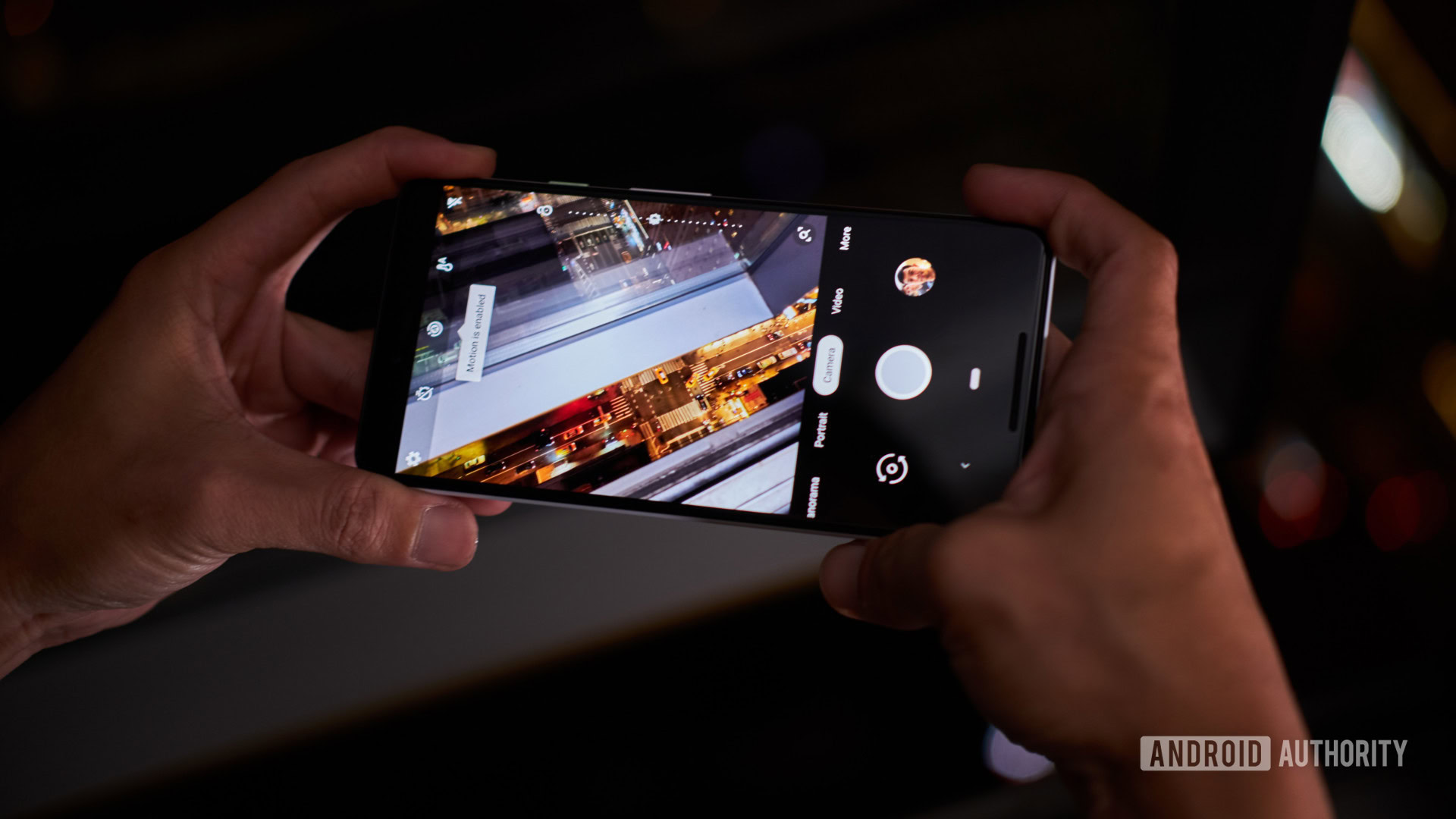
The new devices utilize an improved Pixel Visual Core, which will help process photos even faster. Google Lens should be active by default when you have the camera app open, so you can tap on objects to learn more about them.
As expected, Google added a bunch of new software features to help you make the most of your mobile camera. There’s Top Shot, which captures multiple images every time you hit the shutter button and selects the best one, potentially decreasing the number of failed shots. Photobooth lets you snap selfies with just a smile or a funny face. Playground adds a bunch of virtual animated characters to your shots. There are other smaller improvements, including Fused Video Stabilization and Motion Auto Focus.
Perhaps the most interesting Pixel 3 camera feature Google teased is Night Sight, which combines data from multiple frames to improve low-light performance. Google says you won’t need to use a flash ever again, but we’ll have to wait about a month for this feature to roll out.
Further reading:
- Google Pixel 3 and Pixel 3 XL officially announced: Camera improvements galore
- Google Pixel 3 and Pixel 3 XL: Where to buy, when, and how much
- All the official Google Pixel 3 accessories we could find
- Google Pixel 3 vs Galaxy Note 9, LG V40, and HUAWEI P20 Pro
- Google Pixel 3 / 3 XL vs Pixel 2 / 2 XL: A tale of four flagships
- Google Pixel 3: Here are all the new camera features
- Google Home Hub: Google’s in-house smart display announced
- Google Pixel Slate announced: Revamped Chrome OS and more
Alright, now that the Pixel 3 is finally official, are you picking one up? Let us know in the comments.